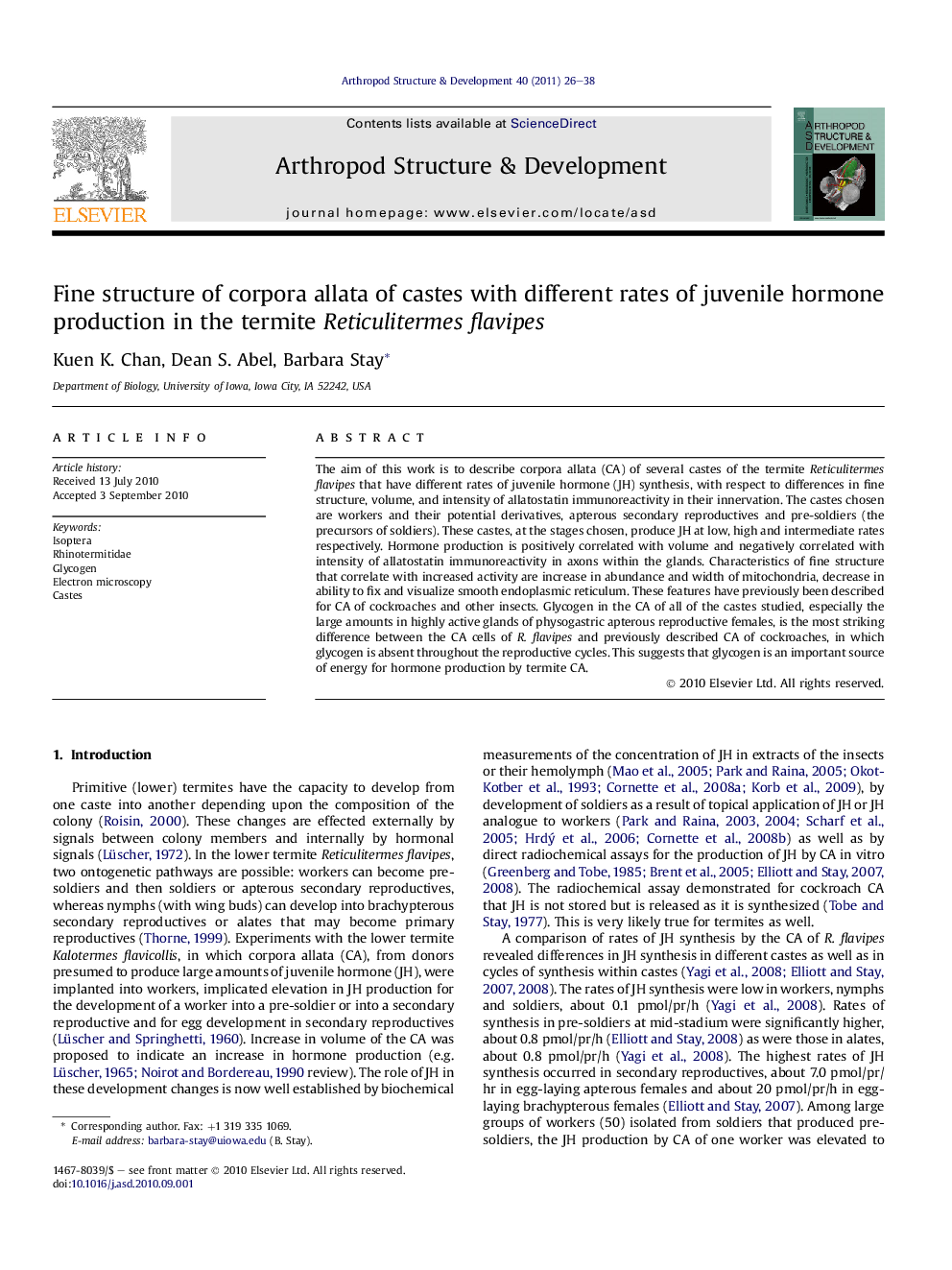| Article ID | Journal | Published Year | Pages | File Type |
|---|---|---|---|---|
| 2778861 | Arthropod Structure & Development | 2011 | 13 Pages |
The aim of this work is to describe corpora allata (CA) of several castes of the termite Reticulitermes flavipes that have different rates of juvenile hormone (JH) synthesis, with respect to differences in fine structure, volume, and intensity of allatostatin immunoreactivity in their innervation. The castes chosen are workers and their potential derivatives, apterous secondary reproductives and pre-soldiers (the precursors of soldiers). These castes, at the stages chosen, produce JH at low, high and intermediate rates respectively. Hormone production is positively correlated with volume and negatively correlated with intensity of allatostatin immunoreactivity in axons within the glands. Characteristics of fine structure that correlate with increased activity are increase in abundance and width of mitochondria, decrease in ability to fix and visualize smooth endoplasmic reticulum. These features have previously been described for CA of cockroaches and other insects. Glycogen in the CA of all of the castes studied, especially the large amounts in highly active glands of physogastric apterous reproductive females, is the most striking difference between the CA cells of R. flavipes and previously described CA of cockroaches, in which glycogen is absent throughout the reproductive cycles. This suggests that glycogen is an important source of energy for hormone production by termite CA.
